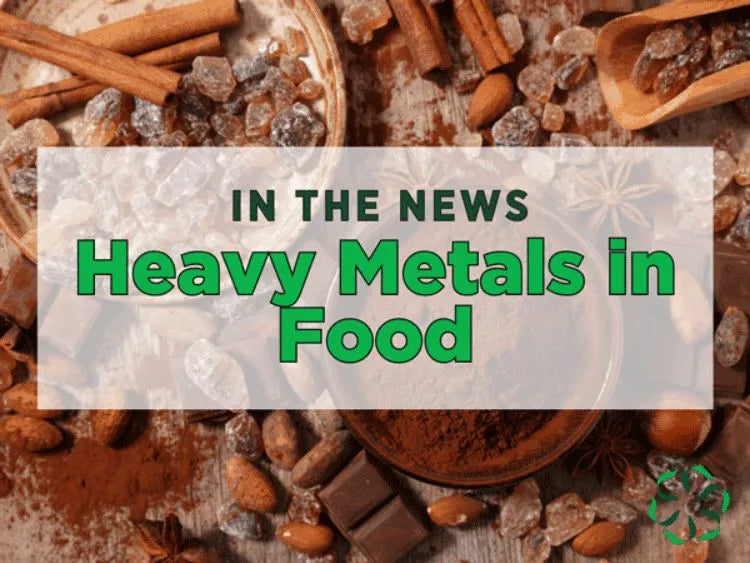
Dark Chocolate, Heavy Metals, and How We Keep ChocoBerry Blast Safe
Dark chocolate (not in chocoberry blast!) is often praised for potential benefits in cognition and cardiometabolic health. It also carries a real caveat: independent testing has repeatedly found concerning levels of lead and cadmium in a meaningful share of chocolate products. Consumer Reports’ multi-year testing has shown that about a third of chocolate products, spanning chips, powders, cocoa mixes, and bars, exceeded their risk thresholds for at least one metal (Consumer Reports 2023; CR follow-up 2024). A recent academic analysis likewise documented cadmium exposures from cacao in foods beyond obvious “chocolate” categories (Vanderschueren 2023).
What the science and regulators say now
Health agencies recognize chronic heavy-metal exposure as a risk factor for hypertension, kidney injury, gastrointestinal dysfunction, and reproductive effects among other outcomes (Balali-Mood 2021 (NIH); Rahimzadeh 2017; Azil 2025).
The U.S. FDA analyzes foods for metals using highly sensitive ICP-MS methods (Elemental Analysis Manual 4.7) and participates in Codex standards-setting. Codex has adopted maximum levels for cadmium in chocolate—generally tighter for higher-cacao products (FDA: Lead in Food; FDA: Cadmium in Food).
Independent enforcement under California Proposition 65 has also driven transparency and mitigation work. A multi-party settlement produced an expert report on sources of lead and cadmium in cocoa and outlined reduction strategies at farm and processing stages (As You Sow & NCA Expert Panel 2022). As You Sow’s testing program has issued dozens of notices over products exceeding Prop 65 daily exposure thresholds (Program overview).
How metals get into cocoa—and why levels vary
Cadmium is primarily a soil-borne issue absorbed by the cocoa plant in certain geographies; lead contamination is more often introduced after harvest from soil dust deposition and handling during open-air drying and early processing, though both routes can co-occur (expert panel summary). Longer supply chains and mixed lots complicate traceability and make lot-specific testing essential.
Dr. Cohen on ChocoBerry Blast
FROM DR. COHEN, M.D., regarding our ChocoBerry Blast cocoa safety: Chocoberry Blast contains approximately 400 mg of cocoa flavanols and around 600–900 mg of other flavonoids and polyphenols per serving. Our toxicity-metal safety score for the cocoa component ranges in the 500–1000 band in our internal index—well below the lowest values we have observed among commodity dark chocolate bars.
We require supplier assays and confirm with independent laboratories. Current lot status: non-fermented cocoa (low metal toxicity, pass); beet powder (low metal toxicity, testing in progress); adaptogen fraction (low metal toxicity, pass); berry essentials (low metal toxicity, pass); cocoa extract (low metal toxicity, testing in progress). Pending items are sourced from the same qualified raw-material streams and are expected to pass based on historical data. When new certificates post, we update our internal quality files and can share summaries upon request.
Why we test, what we use, and which limits we consider
We align our third-party testing with FDA analytical methods for multi-element panels and reference international benchmarks such as Codex MLs for cadmium in chocolate and related cocoa products (FDA methods; FDA on Codex MLs). We also monitor NGO and trade-group guidance to drive continuous reduction at the sourcing level (NCA statement).
How consumers can minimize exposure without losing the benefits
Stay informed with independent testing summaries and choose brands that publish lot-level data or engage credible third-party labs (CR explainer). Diversify sources and servings across the week rather than relying on a single high-cacao item daily. Favor products sourced from regions with historically lower cadmium soils or lots verified by recent testing (see the expert panel recommendations for farm-level mitigation here). Remember that risk is a function of dose over time; moderation and variety remain protective.
Key context in one place
Independent consumer testing indicates a persistent signal of elevated lead and/or cadmium in a portion of chocolate products across multiple years (CR 2023; CR 2024). European and U.S. authorities continue to evaluate cadmium exposure and tolerable intakes in diet overall (EFSA; EFSA 2023 assessment). FDA’s current focus is on robust detection and risk-based oversight while Codex MLs guide international trade (FDA–Codex).
Bottom line from us
Enjoy the benefits of flavanols and polyphenols—without second-guessing. Our cocoa inputs are selected for lower-risk geographies and processing, vetted by supplier COAs, and verified with third-party multi-element panels aligned to FDA methods. If you’d like lot-specific summaries for ChocoBerry Blast, contact us and we’ll share the latest numbers.
Additional reading: general health effects and mechanisms of heavy metals (Jomova 2025), cadmium toxicology primers (Charkiewicz 2023), and practical consumer guidance on choosing lower-metal chocolate options (CR 2025 guide).
